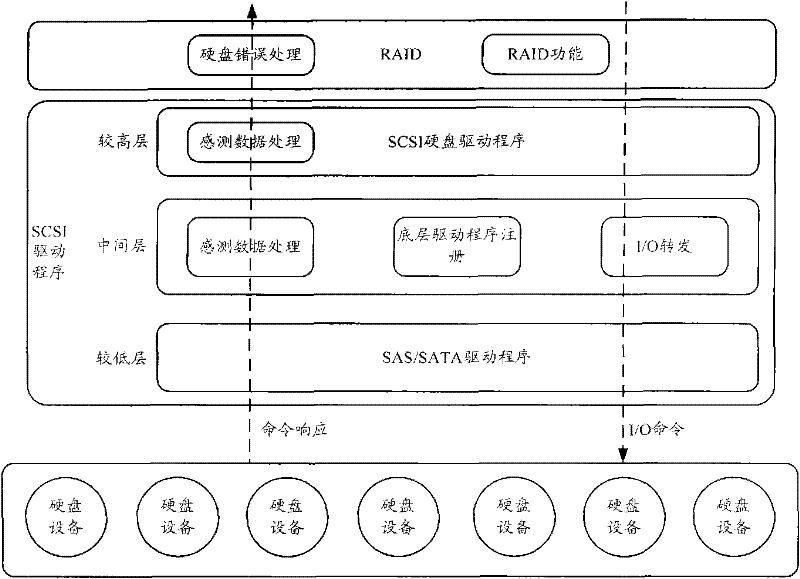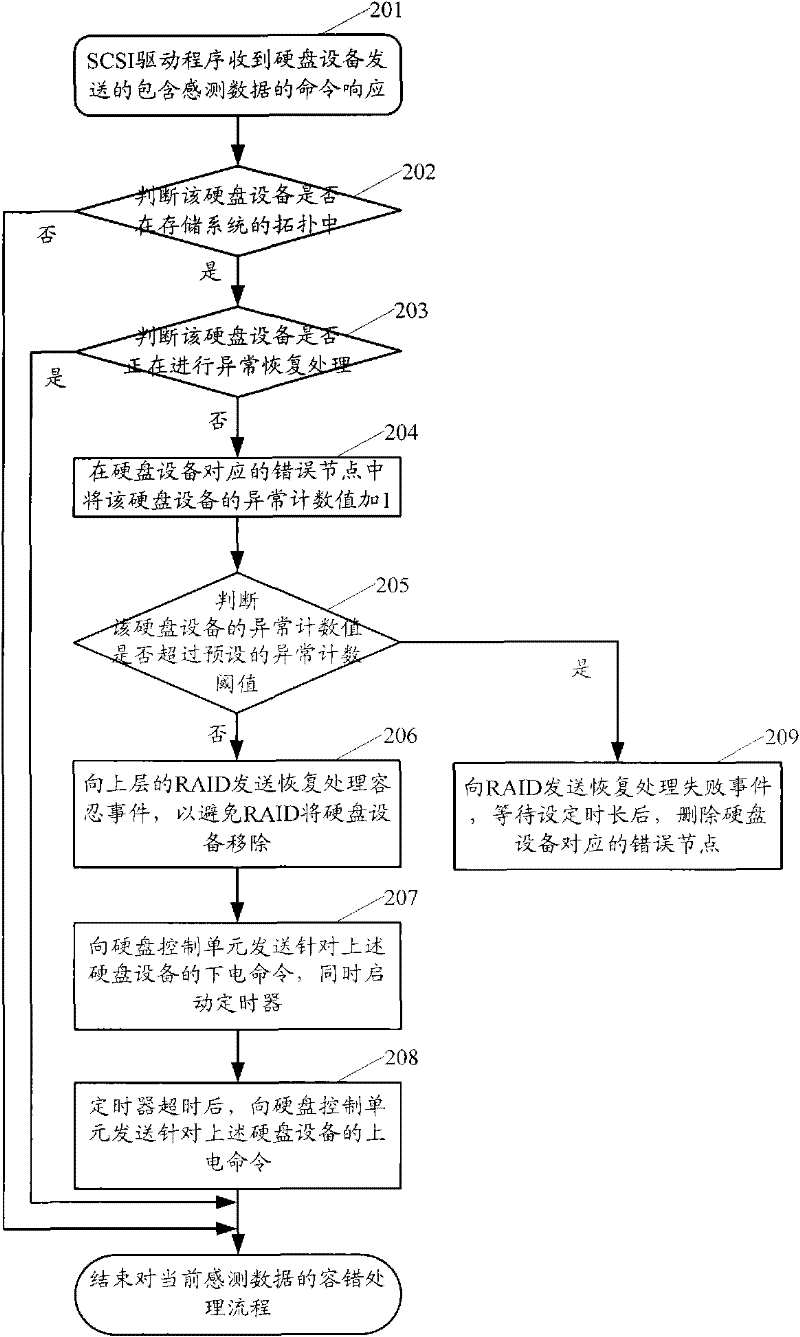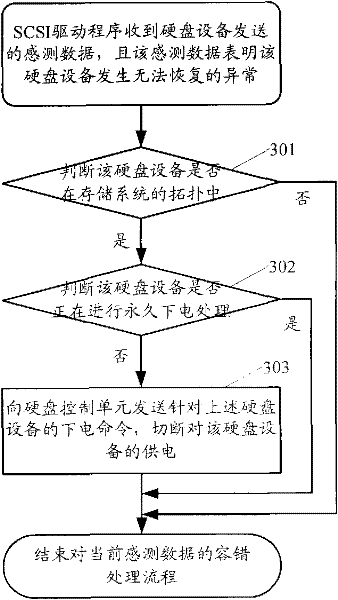Method and device for processing SCSI sensing data
A technology for sensing data and processing methods, applied in the field of computer communication, it can solve the problems of time-out storage systems, inability to solve abnormal hard disk devices, storage system crashes, etc., and achieve the effect of improving fault tolerance.
- Summary
- Abstract
- Description
- Claims
- Application Information
AI Technical Summary
Problems solved by technology
Method used
Image
Examples
Embodiment 1
[0025] Embodiment one, as figure 2 As shown, the method may specifically include the following steps:
[0026] Step 201: The SCSI driver program receives a command response containing sensing data sent by the hard disk device.
[0027] Step 202: Determine whether the hard disk device is in the topology of the storage system, and if so, execute step 203; otherwise, end the fault-tolerant processing flow of the sensed data.
[0028] In the storage system, a logical view will be generated for the topology of the storage system. After the hard disk device is successfully added to the storage system, it will exist in the logical view. Therefore, in this step, by querying whether the hard disk device exists in the storage system In the logical view of the storage system, you can know whether it is in the topology of the storage system.
[0029] Step 203: Determine whether the hard disk device is undergoing abnormal recovery processing, if yes, end the fault-tolerant processing fl...
Embodiment 2
[0045]Embodiment two, such as image 3 As shown, when the SCSI driver receives the sensing data sent by the hard disk device, and the sensing data indicates that an unrecoverable abnormality occurs in the hard disk device, perform the following steps:
[0046] Step 301: Determine whether the hard disk device is in the topology of the storage system, if yes, execute step 302; otherwise, end the fault-tolerant processing flow of the sensed data.
[0047] Step 302: Determine whether the hard disk device is being permanently powered off, if yes, end the fault-tolerant processing flow of the sensing data; otherwise, execute step 303.
[0048] Step 303: Send a power-off command for the hard disk device to the hard disk control unit, and cut off the power supply to the hard disk device.
[0049] So far, the process shown in the second embodiment ends.
[0050] In any scenario, the sensing data can be fault-tolerantly processed according to the procedures shown in Embodiment 1 and E...
Embodiment 3
[0056] Embodiment 3: After the SCSI driver receives the command response containing the sensing data, the parsed scene information is: the I / O command is a management control command and the state of the hard disk device is a static access state, that is, in Table 1 Scenario A, then as Figure 4 shown, perform the following steps:
[0057] Step 401: Determine whether the management control command affects the normal access of the hard disk device. If yes, it can be executed according to the fault-tolerant processing method in Embodiment 1, even if the hard disk device is first powered off and then delayed in the recovery mode of power-on; if not, Execute step 402.
[0058] If the management control command is a management command to obtain the serial number, identification and other information of the hard disk device, it will not affect the normal access of the hard disk device; if the management control command is to open or close the cache control command, it will affect t...
PUM
 Login to View More
Login to View More Abstract
Description
Claims
Application Information
 Login to View More
Login to View More - R&D
- Intellectual Property
- Life Sciences
- Materials
- Tech Scout
- Unparalleled Data Quality
- Higher Quality Content
- 60% Fewer Hallucinations
Browse by: Latest US Patents, China's latest patents, Technical Efficacy Thesaurus, Application Domain, Technology Topic, Popular Technical Reports.
© 2025 PatSnap. All rights reserved.Legal|Privacy policy|Modern Slavery Act Transparency Statement|Sitemap|About US| Contact US: help@patsnap.com



